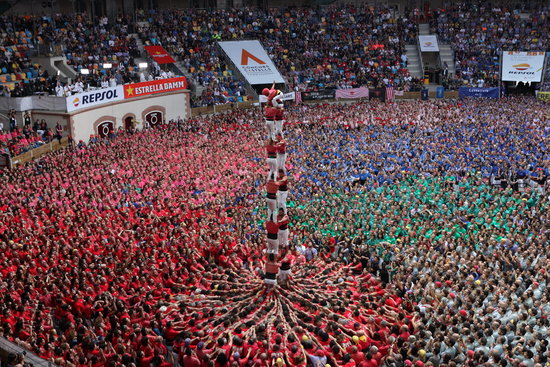Catalonia's human towers competition: what you need to know
The very best examples of the Catalan tradition of building 'castells' is on show this weekend in Tarragona

One of Catalonia's most spectacular traditions is building human towers, known locally as 'castells,' and this weekend has seen a big day for the groups, or 'colles,' who build the towers, with the 27th edition of the Concurs de Castells, in the southern city of Tarragona.
The human towers competition that every two years pits the best groups in the country against each other will see 42 teams competing to build the tallest and most complex constructions. The past eight editions have been won by the Castellers de Vilafranca.
However, this year the group from Vilafranca del Penedès will have stiff competition from the Vella and Joves teams, both from the city of Valls, who will come with new tactics. Also looking for a place on the podium will be Tarragona's Colla Jove and Mataró's Capgrossos.
25,000 people expected to attend
Over the weekend, the different groups will compete for top spot in Tarragona's Tàrraco Arena Plaça, with the best 12 competing in the finals on Sunday before an audience of some 25,000 people. In fact, this edition is the first to completely sell out.
Proclaimed a Masterpiece of the Oral and Intangible Heritage of Humanity by UNESCO in 2010, this weekend in Tarragona will feature the very best examples of the tradition of building human towers, and an ideal opportunity for anyone interested in seeing what the tradition that goes back to the 17th century is all about.
With the Vilafranca team under pressure to continue their winning streak, the head of the colla, Toni Bach, says "everyone knows we like competing a lot and we have always shown that we grow when faced with adversity." Yet, Bach admits that this year will be "the most difficult edition in history."
How the towers are scored
While each team will have their own particular strategies and structure, the towers are scored on the number of tiers in each tower and the number of people on each level. A tower is complete once a child, sometimes as young as five, known as an ‘enxaneta,’ reaches the top and raises their arm.
While each colla can be distinguished by the color of their shirts, all the castellers wear the traditional garb that includes white trousers and a wide black sash wrapped around the waist, providing not only back support but also a foothold for the participants making the perilous climb up –or down– the tower of people.
Human safety net
Building a human tower is not easy, and each group practices for months before competing. Yet, even though it is not unusual to see a human tower come crashing down, the castellers have their own human safety net, in the form of dozens of team members supporting the base of the tower.
In fact, this element has even given Catalan one of its most unique expressions, ‘fer pinya,’ which when used figuratively means to come together in strong support of someone, or something, in the face of adversity.